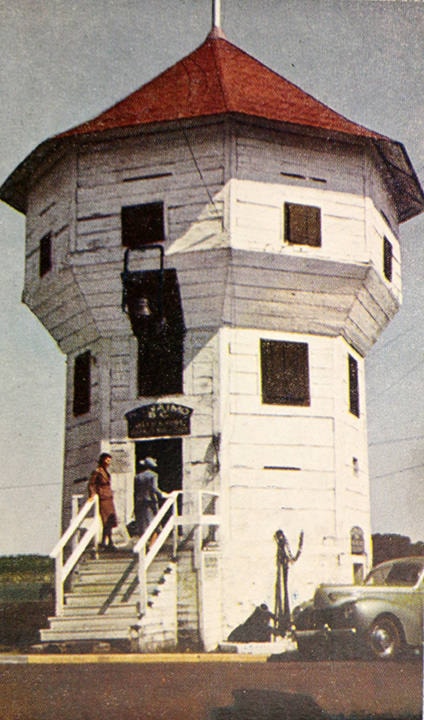It was the middle of the night when Stewart and his men paddled northward towards Nanaimo with their prisoners.
For Indian fugitive Shill-La-Lum, the long arm of the law came in the form of Const. William Stewart. But it didn’t come easily.
For Stewart, it didn’t come naturally. The 34-year-old native of Halifax, Eng., had come to B.C. from eastern Canada during the Cariboo gold rush, only to become a policeman in the new coal port of Nanaimo.
Sixty-plus years ago, a pioneer remembered Stewart as “an old man when I knew him, and his eagle eye had lost none of its fire. A great pipe smoker, he was a man of few words.”
With a jurisdiction that ranged from Cowichan to Comox, Stewart, who ultimately became Nanaimo’s chief of police, spent much of his time “on the road” — more specifically, on the water, a dugout canoe being his usual mode of transport. When an Indian shot and killed a man on one of the Gulf Islands, Stewart took up his trail. Fortunately for history, he recorded this case in his notes, recounting how January of 1868 was so cold that Nanaimo Harbour froze over.
“I got a canoe, which, to add to the discomfort, turned out to be leaky. As it would be better to get to any rancherie (village) unobserved, I decided to travel by night.”
With Special Const. Arthur Penney, guide and interpreter Tunce and their unidentified informant, Stewart set out with the barest of supplies and comforts. They checked the villages and encampments at Chemainus, Thetis and Kuper islands, only to be told that the wanted man was headed for Cowichan.
From Maple Bay they had to struggle through deep snow to Quamichan village where they learned that their man had gone to Somenos village (Duncan) the day before. There, Stewart was assured that the fugitive had fled to Cowichan Lake. Convinced that he was getting the run-around, Stewart sought the assistance of JP John Morley. After staying the night at Morley’s, they concluded it was best to let the manhunt “rest for the time being, but arranged for word to be sent me if he were seen. Meanwhile, I would work on a case Mr. Morley brought to my attention.”
The JP had told him of another tribal killing at Oyster Harbour the year before. A coroner’s jury had ruled that Shill-La-Lum had committed deliberate murder but he’d evaded capture. Morley wondered, since Stewart would be in the neighbourhood, so to speak, if he might check out Oyster Harbour on his way home.
The policeman engaged a member of the Quamichan band to point out Shill-La-Lum. At a village at the mouth of the Chemainus River, Chief Jacob assured him that the matter had been resolved according to tribal custom, Shill-La-Lum having paid blankets as reparations to his victim’s family. “But I told him that might be their custom, but it was not the white man’s law, and if I met Shill-La-Lum, I would have to take him to be tried in our courts.”
Again the posse set off in their leaky canoe, bound for the village of Sicamene. They dawdled in mid-channel so as to arrive at night but their landing was announced by barking dogs. To make the most of his fleeting surprise, Stewart posted Tunce and Penney at each end of a longhouse known to be used by Shill-La-Lum.
Stewart’s sudden appearance in the communal sleeping quarters sparked surprise then anger. His “Where’s Shill-La-Lum?” brought a multitude of evasive answers, but the missing man’s bunk was pointed out to him. The bedding was intact and Shill-La-Lum’s musket and paddle were there.
Just then, Chief Jacob arrived. He was armed, and when Stewart demanded to know what he wanted, replied that he was just visiting. Alarmed that things could easily get out of hand, Stewart handcuffed him, at which the chief suggested they speak privately. Shill-La-Lum, he said, was hiding in his village; he suggested that the posse return at once before the wanted man could disappear into the forest. Stewart, sure that he was lying, replied that he’d settle for taking Jacob to Nanaimo and charging him with aiding and abetting a fugitive.
Long minutes passed in silence while the chief sat deep in thought, and the villagers waited expectantly. At length, Jacob spoke to a boy who went outside and shortly returned with Shill-La-Lum who allowed himself to be taken without a struggle. It was the middle of the night when Stewart and his men paddled northward towards Nanaimo with their prisoners.
Chief Jacob, after spending three days in a cell so cold that the water bucket froze overnight, was released with a reprimand. Shill-La-Lum was convicted of murder and sentenced to hang but had his sentence commuted to life imprisonment. While working with the chain gang in Victoria, he escaped and was never recaptured.
William Stewart became Nanaimo’s chief constable. Stewart Avenue recalls this stalwart policeman who died in 1904 after 30 years of law enforcement. As Nanaimo’s jailer in his later years he’d set the chain gang to work, painting and maintaining the Hub City’s landmark Bastion. This was long before others recognized the icon’s historic value.
